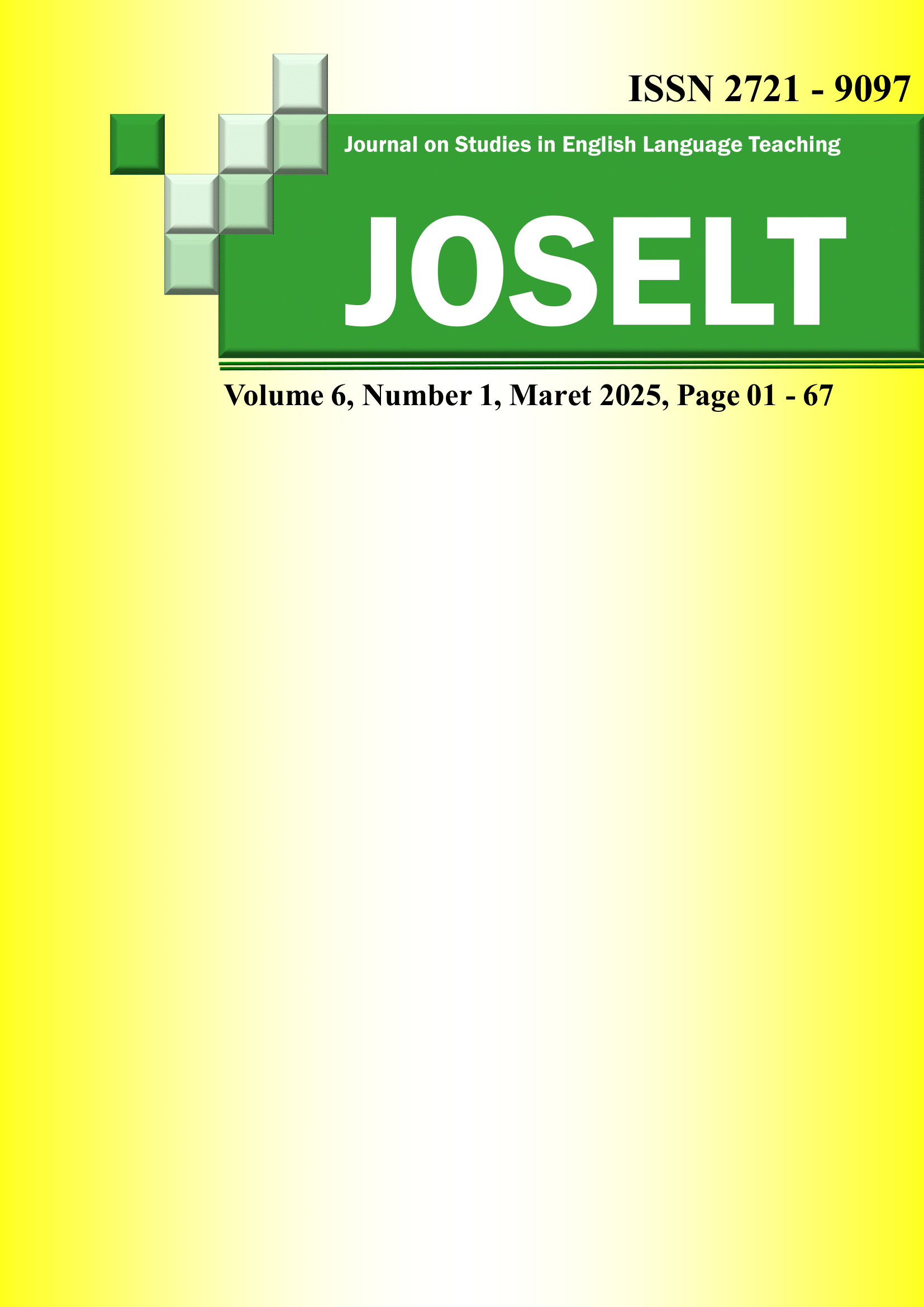Exploring Cognitive Domain of Revised Taxonomy Bloom on My Next Words Grade 1 English Textbook
Keywords:
Cognitive Domain, Revised Bloom's Taxonomy, LOTSAbstract
The purpose of this study is to identify cognitive domain categories included in the textbook used to teach English for first-grade elementary school students in Indonesia. The study's findings can help publishers and educators understand textbook material and determine if more content is needed to achieve national requirements. The identification was based on the revised Bloom's taxonomy, which proposes six degrees of cognitive dimension. The authors adopt the qualitative method. The activities were categorized according to the levels of the cognitive dimensions, and the data were arranged in the data analysis table. The result showed that there were 82 tasks in the textbook. 46 (56,1%) remembering, 12 (14,6%) understanding, 15 (18,3%) applying, 9 (11%) analyzing, 0 (0%) evaluating, and 0 (0%) creating. Moreover, 73 activities were classified as lower order thinking (LOTS) and 9 activities as higher order thinking (HOTS) activities. The main task was remembering which the highest cognitive level listed in the Revised Bloom's Taxonomy. Furthermore, there are considerable differences in how LOTS and HOTS tasks are distributed throughout chapters but some chapters also do not have HOTS. These results imply that students' higher-order thinking skills (HOTS) may not be sufficiently developed by depending just on the textbook.
References
Arsana, A. A. P., Artini, L. P. N. L. P. S., & Santosa, M. H. (2023). Cognitive Domain Levels in English for Tour Guide Textbook Used in Indonesian Tourism Vocational Schools. Prosiding Seminar Nasional Riset Linguistik Dan Pengajaran Bahasa, 5(1), 310–321.
Marzuki, Hidayati, Rusdin, D., & Pratiwi, H. (2022). Content Analysis of English Textbook “When English Rings A Bell” In Terms of Cognitive Domain. Klasikal: Journal of Education, Language Teaching and Science, 4(1), 195–201.
Nurmatova, S., & Altun, M. (2023). A Comprehensive Review of Bloom’s Taxonomy Integration to Enhancing Novice EFL Educators’ Pedagogical Impact. Arab World English Journal, 14(3), 380–388.
Rena, I. P., Kamil, A. B., & Al-Baaekani, A. K. (2023). An Analysis of Speaking Activities in Indonesian ELT Textbook Based on Cognitive Domain of Bloom’s Taxonomy Revised. IJET, 12(1), 39–47.
Rustiyani, Sofyan, D., & Syafryadin. (2021). Levels Of Cognitive Domain of Tasks in English Textbooks for Senior High School: A Revised Bloom’s Taxonomy Analyses. Jurnal Tadris Bahasa Inggris, 14(2), 280–293.
Herdiansyah, T. S., & Pujiati, H. (2021). Cognitive Domain of Revised Bloom Taxonomy in English Student Book. JELLT (Journal of English Language and Literature Teaching), 6(1), 164–168.
Shadri, R., Hermita, N., Deswarni, D., S, A. P., Lingga, L. J., & Wijoyo, H. (2023). Assessment in The Merdeka Curriculum: How Are the Teachers’ Perspectives on It? JURNAL PAJAR (Pendidikan Dan Pengajaran), 7(1), 202–209.
Shoshanna, S. (1999). Articles Qualitative Methods: What Are They and Why Use Them? Health Service Research, 35(5), 1101–1118.
Abdelrahman, Dr., M., S., H., B. (2014). An Analysis of the Tenth Grade English Language Textbooks Questions in Jordan Based on the Revised Edition of Bloom's Taxonomy. Journal of Education and Practice, 5(18), 139-151.
Armala, I., Fauziati, E., & Asib, A. (2022). Exploring Students’ LOTS and HOTS in Answering Reading Questions. Journal of Education Technology, 6(3), 390-397.
Suarsih, L. (2023). Analisis Kendala Keterampilan Membaca Permulaan Pada Fase – A Siswa Kelas 1 Di Sd Negeri Cipinang Besar Selatan 19 Pagi Jakarta. Language: Jurnal Inovasi Pendidikan Bahasa Dan Sastra, 3(1), 20-26.

